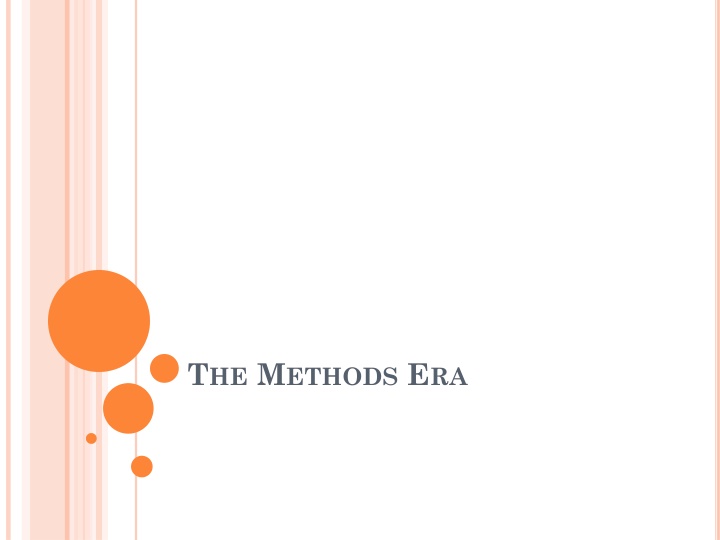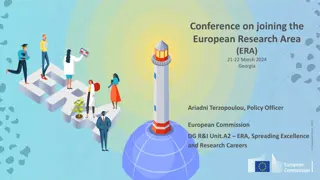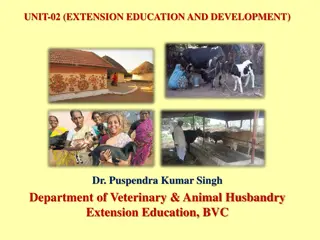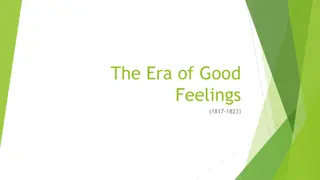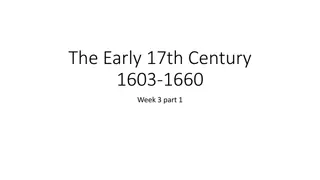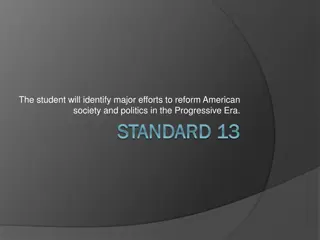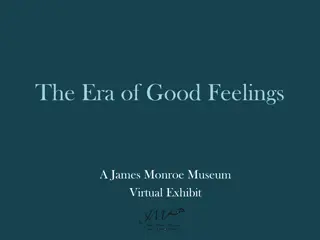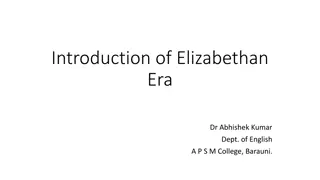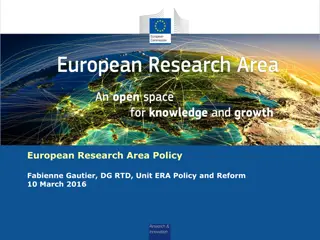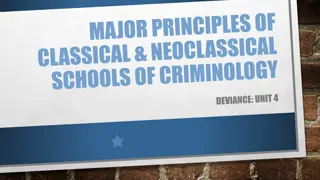THE METHODS ERA
The methods era in language learning explores various techniques such as the Audio-Lingual Method, Contrastive Analysis, and the Silent Way. These methods aim to develop linguistic skills through drills, repetitions, and problem-solving, ultimately enabling students to speak the language effectively and autonomously.
Download Presentation

Please find below an Image/Link to download the presentation.
The content on the website is provided AS IS for your information and personal use only. It may not be sold, licensed, or shared on other websites without obtaining consent from the author.If you encounter any issues during the download, it is possible that the publisher has removed the file from their server.
You are allowed to download the files provided on this website for personal or commercial use, subject to the condition that they are used lawfully. All files are the property of their respective owners.
The content on the website is provided AS IS for your information and personal use only. It may not be sold, licensed, or shared on other websites without obtaining consent from the author.
E N D
Presentation Transcript
AUDIO LINGUAL METHOD (Army Method) This method is the first scientific method. It has roots in both psychology and linguistics. It s based on Behavourism. Aim: to reduce mental burden and increase frequent repetition and imitation.
Habits need to be repeated. Positive reinforcements help sts develop correct habit. Techniques Dialogues, repetitions, drills.
Contrastive Analysis is to compare & contrast 2 languages to uncover the similarities and differences between them. The differences cause that sts commit erros. These errors set a barrier to new habit formation.
Sts must now linguistics, words, patterns, etc. in order to encode the meaning and to speak. Drilling is important. Goal: to speak the language automatically without stopping and thinking. No mother tongue. Errors are corrected immediately.
T. Direct & control. They are good modals. They show the correct language, pronunciation. They know the differences btw the 2 languages. They foresee probable errors. They don t teach grammar directly. (Inductively grammar teaching).
Rules through examples & drills. Listening & Speaking skills are more important than Reading & Writing. (Aim: practical needs are met.)
TECHNIQUES Backward build up drill Single slot substitution drill Multiple slot substitution drill Transformational drill Chain drill
SILENT WAY By Caleb Gattengo. Based on cognitive theory. Learning is supported by physical objects. Problem solving is very important.
Sts are autonomous (responsible for their own learning.) Inductive learning. Grammar are given to the sts. They induce the rules. Focused on vocab. teaching.
Audio Lingual is based on habit formation while silent way is based on rule formation. Goal: to be autonomous learners. Sts correct themselves. They develop their own strategies. Mother tongue is sometimes used. However, NO translation.
Sts fulfill the learning. Teacher s silence gives the responsibility to the sts. T isn t a modal. T doesn t correct errors. He provides feedback using gestures, mimics and body language. (Self correction & peer correction are also used).
easy difficult grammar subjects. All skills are important. However, 1. speaking, 2. reading & writing. Sts Sts interaction. They learn from each other. T. is silent.
TECHNIQUES T s silence Colour-coded sound charts Fidel charts Rods Self & peer correction.
SUGGESTOPEDIA By Georgi Lozanov in 1970s. Decoration, furniture, arrangement, music are the main characteristics. Based on Humanism. Aim: to prepare sts for learning mentally and emotionally.
Mother tongue is used at the early stages (in dialogues and new vocabulary). Minimum grammar teaching (can be taught in learner s mother tongue.) T is the authority. Sts play a child role. (New identity)
Speaking & listening are more important than reading & writing. Sts Sts interaction (group&pair work) Errors are corrected using the correct form. Aim: to let sts feel relaxed, comfortable, secure ,n the class. Peripheral learning
HOW DOES SUGGESTOLOGY WORK? Suggestology (harnessing & redirecting the mental capacity to foster maximum learning) 1) Desuggestion: -Remove barriers, -Unload unwanted, bad, negative feelings and memories About language learning. 2)Suggestion:
2) Suggestion Loading positive memories about language learning A-direct suggestion: Addresses to sts consciousness B-indirect suggestion: Addresses to sts subconsciousness
DESUGGESTION & SUGGESTION (5 PRNCIPLES) Authority concept: 1. Infantilization: (parent-child) T. sts. (role 2. playing ,games, songs, etc.) Double Planedness: learning the instructions 3. and linguistics with music. Intonation & Rhythm: to avoid boredom (in a 4. playful manner.) Concert pseudo-passiveness: teaching with 5. music, rhythm, intonation, tone.
DESUGGESTOPEDIA 1) Receptive Phase:
DESUGGESTOPEDIA 2) Activation Phase:
TECHNIQUES Comfortable classrooms Peripheral learning New identity (child-like) Visualization 1st concert & 2nd concert Primary activation & secondary activation Role plays & dramatization Games
COMMUNITY LANGUAGE LEARNING By Charles A. Curran. Based on Humanism. It is composed of humanistic techniques, emotions and linguistics. Support holistic approach.
Whole-person learning At the early stages sts are dependent on T.
SARD (TO ENABLE A SECURE CLASSROOM) Security (sts feel secure) Attention&Aggression (increase attention foster learning Retention&Reflection (recording&listening their voices) Discrimination (to notice sim. & dif. btw 2 languages.)
IN THIS THEORY Sts decide the topic. Translation in chunks by T. Recording the production Conversation activities Goal: non-competitive environment so that they can use the language communicatively.
Mother tongue is used to make sts feel safe (translation.) T is a counselor. Listening & speaking are impotant. Pronunciation is important. T Sts / Sts Sts interaction (group & pair work)
T corrects errors repeating the correct form without emphasizing the person who commits the error. No textbook, no pre-planned syllabus. (determined by the sts)
TECHNIQUES Transcription: voice recording and writing down the production. Reflection: sts talk about their learning experiences & emotions. Reflective Listening: Tape-recording & Listening. Human Computer: (Recasting) T repeats the correct form. Small Group Tasks: Sts learn from each other in groups.
WHOLE LANGUAGE APPROACH o By a group of US educators. o Aim: to teach the language in real life. o Language is a whole. It should be taught holistically. o It shouldn t be divided into parts such as grammar, vocab, writing, and reading.
Authentic materials & tasks, real life situations are important. T is a facilitator. Sts evaluate themselves. Errors are natural and T tolerates them. Major errors are corrected.
TECHNIQUES Individual & group reading-writing tasks Authentic texts Writing to a real audience Sts make books, journals & magazines. Story writing, e-mail, CV, letter writing.
MULTIPLE INTELLIGENCES By Howard Gardner. There are 8 types of intelligences: 1) Verbal/linguistic intelligence 2) Logical/Mathematical int. 3) Visual/Spatial int. 4) Bodily/Kinesthetic int.
1) Musical/Rhythmic int. 2) Interpersonal int. (self) 3) Interpersonal. (btw people) 4) Naturalist
This theory is used to develop curriculum, plan instruction, course activities, tools & materials. T should choose the most suitable intelligence activity. Exercises from different intelligence types develop all types of intelligence. Every st is unique. Therefore, everybody has different learning styles.
No certain syllabus. As alternatives, there are 4 stages: 1) Awaken the intelligence 2) Amplify the intelligence 3) Teach with the intelligence 4) Transfer of the intelligence
NEURO-LINGUISTIC PROGRAMMING (NLP) By John Grindler and Richard Bandler in 1970s. It says our behaviours are deeply affected by our thoughts and emotions. It trains sts to eliminate their negativity and decrease anxiety and transform them into positive ones.
NLP HAS 4 PRNCPLES Outcomes: knowing what you want to achive. 1. Rapport: minimizing differences and 2. maximizing similarities btw people to constitute rapport with others.
Sensory Acuity: 3. Visual (look & see) Auditory (hear & listen) Kinaesthetic (feel & touch & movement) Olfactory (sense of smell) Gustatory (sense of taste)
4) Flexibility: You need to be flexible and strong- minded in order to manage things in different ways and to find a wide range of skills to fulfill your dreams.
LEXICAL APPROACH By Michael Lewis. Focused on building vocabulary. Aim: to understand and produce lexical phrases as chunks. Focused on Lexical Chunks & Collocations.
When sts see new words several times, learning occurs. Noticing similarities and differences btw 2 languages fosters learning. Language learning is non-linear. Therefore, a linear syllabus isn t sufficient.
Vocab teaching is superior to grammar. Vocabulary is taught in chunks. (Brain recalls the words in chunks easier). Inductive grammar teaching. (Let sts observe and learn grammar)
TECHNQUES Vocab. Notebook Collocation practice Lexical phrases exercises Listening & Reading Repetition Dictionaries Guessing the meaning of a lexical item from context Computer programs (such as COBUILD Bank of English Corpus, The British National Corpus)
